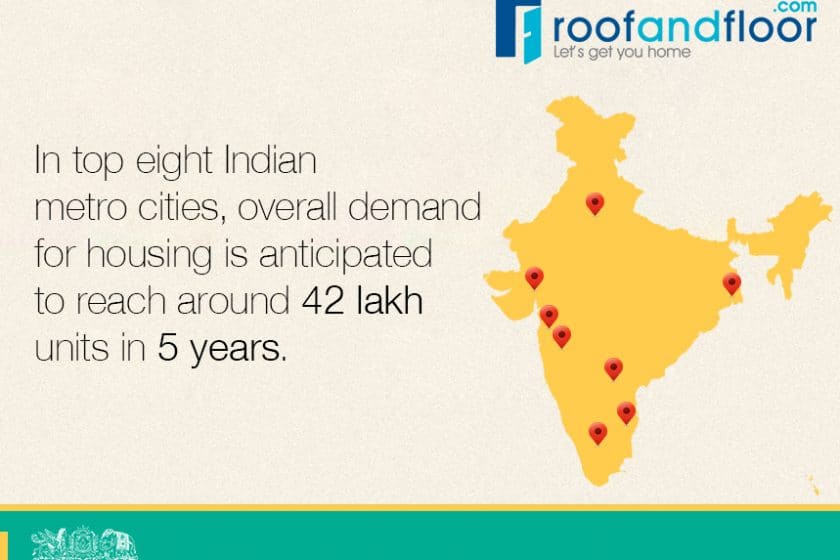A combined report by Global Real Estate Institute (GRI) and Cushman & Wakefield verifies that across the top eight Indian metros overall demand for housing is anticipated to reach around 42 lakh units in five years. However, a predictable 10-lakh housing units only, both planned, and under-construction would be delivered in these cities in the said time. The report titled as “Revitalizing Indian Real Estate: A new era of growth & investment” articulated that Delhi-NCR (NCT, Faridabad, Ghaziabad, Noida, and Gurgaon) alone will make a demand of nearly 10 lakh housing units converting into 24 percent of the pan-India require by 2020.
This report also adds that the LIG (Low Income Group) housing, i.e. properties priced less than 15 lakh is estimated to create demand of around 20 lakh units by 2020. In this segment, housing by private builders will nevertheless be restricted to just 25,000 units. However, the MIG (Middle Income Group) housing, i.e. properties priced between 15 lakh to 70 lakh, will entail for around 647,000 units, representing 65 percent of the entire housing supply in eight cities between 2016 and 2020. As suggested by the report, this demand is likely to be a much higher at 14, 57,000 units.
The Managing Director of Cushman & Wakefield India Anshul Jain appended that “At the ground level, regardless of demand grossly surpassing supply, there is always a substantial ratio of unsold stock in the HIG, and MIG categories, which are not occupied as these properties are incapable of exhibiting appraisal for their buyers. Therefore, these units due to higher-than-expected prices or their locality fall out of preference. The developers do not opt for smaller-sized units, which are closer to city centers because of high land and development costs and deficiency of funds and so profitability significantly reduces in these projects. ”
He further added that regardless of the encouragements from the government, through funding and taxation relief, under the Housing for All 2022 apparition, top cities of India have not witnessed a considerable change in supply for small-sized apartments in MIG or LIG.
Jain added that the step to demonetize large currencies to clean-up black money could further influence the demand for HIG and luxury housing. This is likely to push developers to retune their plans to go well with the high-demand sector of affordable housing.
“Private developers in order to use the prospect of the deficit in supply to demand have to change their approach and make better systems, strategies, technology and most important funding options. As different international companies are vigorously exploring the diverse local markets to categorize the right chance for themselves, native developers will have to get ready to meet their blitz and remain pertinent and cost-effective”, he said.
In terms of housing demands, Mumbai will undoubtedly follow Delhi-NCR, which is estimated to have the maximum demand in all the three sections during 2016-2020. Still, a greater part of the supply is expected to gratify the HIG (High Income Group), subsequently the MIG and LIG. Amid all the eight cities, builders are projected to instigate the maximum number of LIG units in Kolkata.





